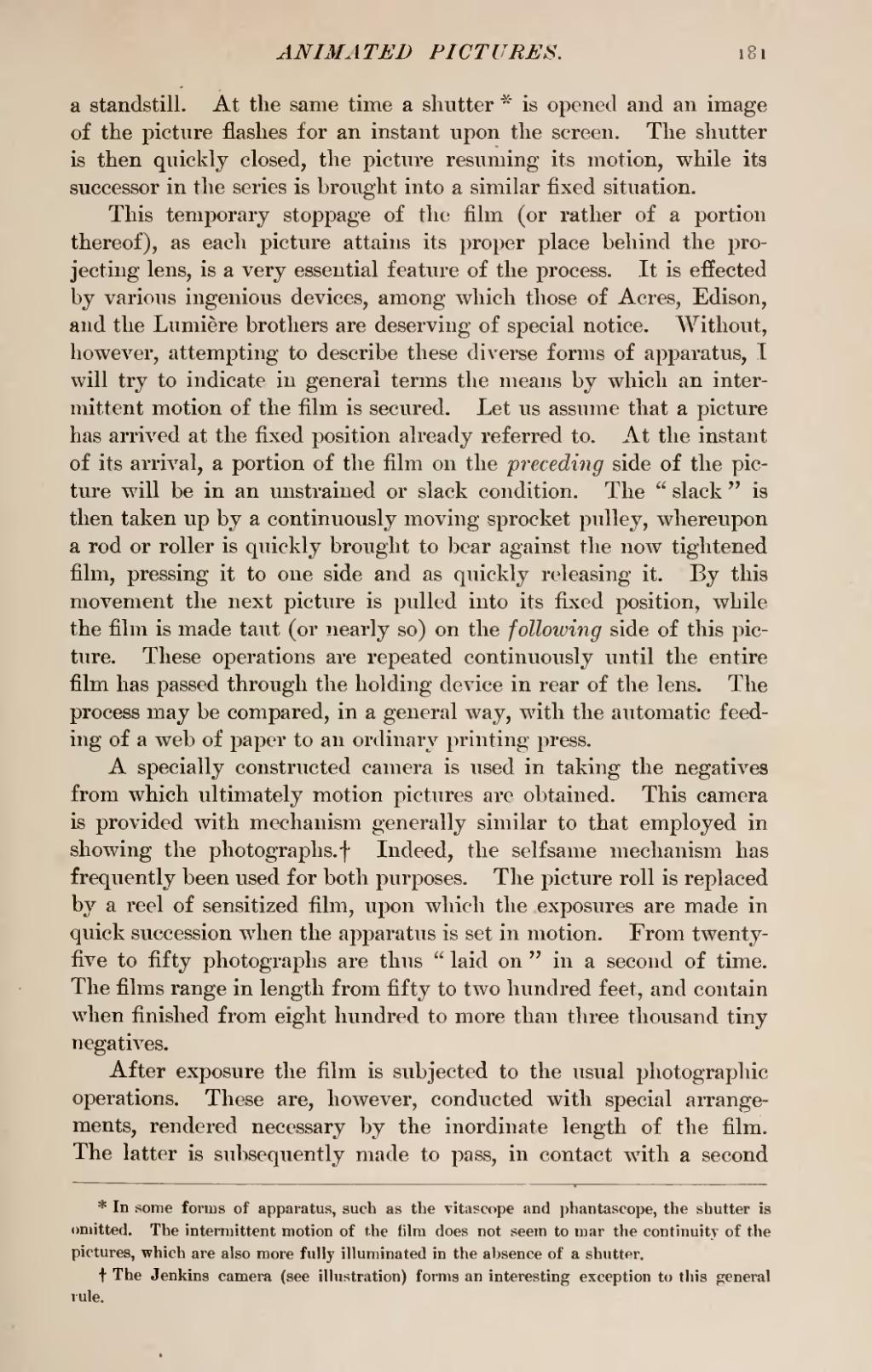a standstill. At the same time a shutter[1] is opened and an image of the picture flashes for an instant upon the screen. The shutter is then quickly closed, the picture resuming its motion, while its successor in the series is brought into a similar fixed situation.
This temporary stoppage of the film (or rather of a portion thereof), as each picture attains its proper place behind the projecting lens, is a very essential feature of the process. It is effected by various ingenious devices, among which those of Acres, Edison, and the Lumière brothers are deserving of special notice. Without, however, attempting to describe these diverse forms of apparatus, I will try to indicate in general terms the means by which an intermittent motion of the film is secured. Let us assume that a picture has arrived at the fixed position already referred to. At the instant of its arrival, a portion of the film on the preceding side of the picture will be in an unstrained or slack condition. The "slack" is then taken up by a continuously moving sprocket pulley, whereupon a rod or roller is quickly brought to bear against the now tightened film, pressing it to one side and as quickly releasing it. By this movement the next picture is pulled into its fixed position, while the film is made taut (or nearly so) on the following side of this picture. These operations are repeated continuously until the entire film has passed through the holding device in rear of the lens. The process may be compared, in a general way, with the automatic feeding of a web of paper to an ordinary printing press.
A specially constructed camera is used in taking the negatives from which ultimately motion pictures are obtained. This camera is provided with mechanism generally similar to that employed in showing the photographs.[2] Indeed, the selfsame mechanism has frequently been used for both purposes. The picture roll is replaced by a reel of sensitized film, upon which the exposures are made in quick succession when the apparatus is set in motion. From twenty-five to fifty photographs are thus "laid on" in a second of time. The films range in length from fifty to two hundred feet, and contain when finished from eight hundred to more than three thousand tiny negatives.
After exposure the film is subjected to the usual photographic operations. These are, however, conducted with special arrangements, rendered necessary by the inordinate length of the film. The latter is subsequently made to pass, in contact with a second
- ↑ In some forms of apparatus, such as the vitascope and phantascope, the shutter is omitted. The intermittent motion of the film does not seem to mar the continuity of the pictures, which are also more fully illuminated in the absence of a shutter.
- ↑ The Jenkins camera (see illustration) forms an interesting exception to this general rule.
